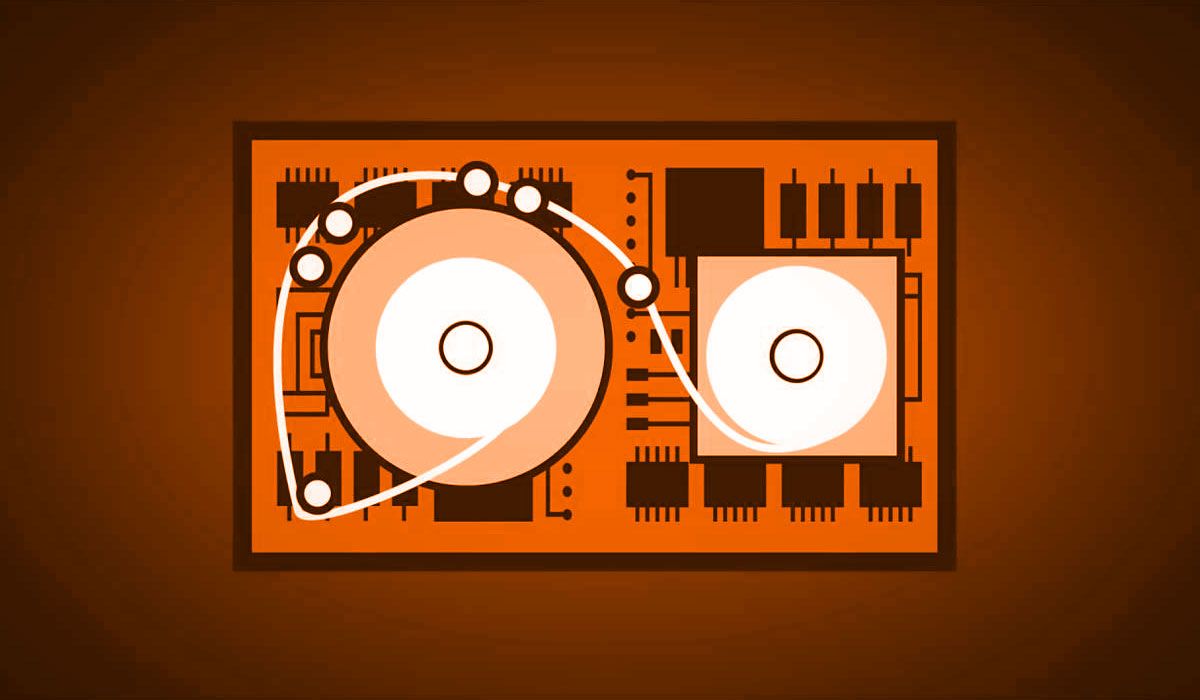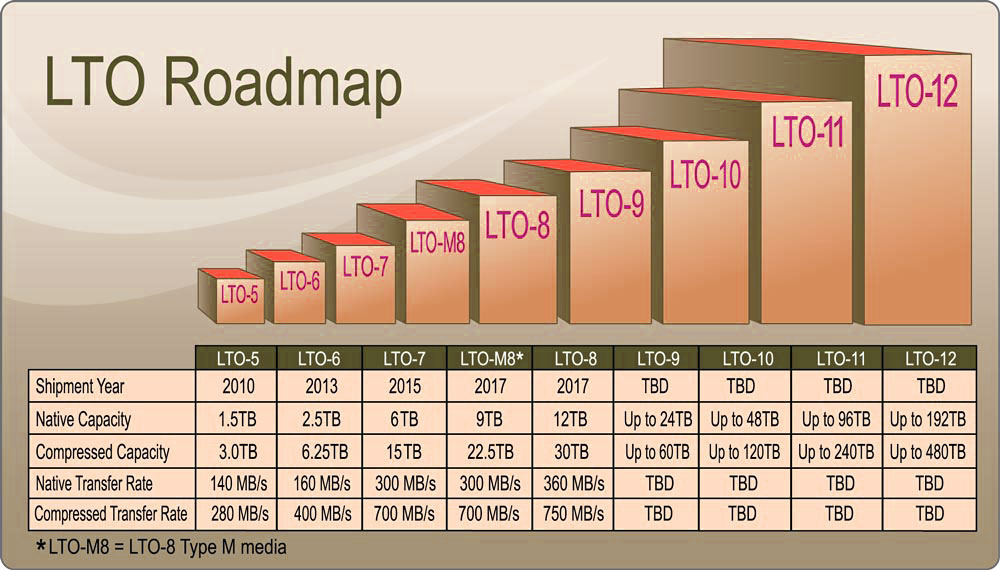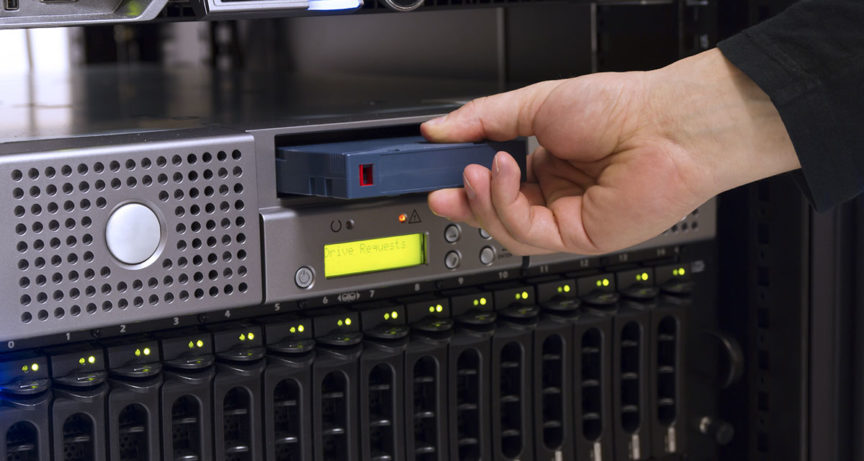
It’s no secret that we are huge advocates of using internal hard drives as the most cost-effective way to archive your data. But, there is another format that can potentially yield a better cost-per-gigabyte than hard drives. We’re talking about recent LTO and LTFS advancements that are making tape an attractive archiving option for those with a ton of data to archive. Yup, we said ‘tape’. Read on…
Tape has long been a medium for storing data, but as hard drives became faster with higher capacities and easier to use, tape fell out of mainstream favor. The development and evolution of LTO and LTFS is poised to bring tape back into the mainstream for archiving large amounts of digital data.
What is LTO?
LTO stands for Linear Tape-Open and has been developed by three major companies (IBM, HPE, and Quantum) over the last ten years. The technology has been developed for a variety of applications including, back-up, high-capacity transfer, long-term archive, and offline storage.

The LTO cartridge is a single spool of tape housed in a tough exterior to protect it from the elements. Once the cartridge is inserted into the tape drive, a spool inside the drive collects the tape so that the drive head in the drive can read the data on the tape or write new data to the tape.
Once reading and writing of data is complete, the tape is spooled back into the cartridge ready for transporting or storage.
What does LTFS have to do with it?
Linear Tape File System (LTFS) was a game changer for LTO. It was introduced in the fifth generation of LTO or LTO 5. Before LTFS you needed special software to read the data on your LTO drive. The software had to load the entire contents from the tape to show you the files that it contained. The process for saving files would also have to be handled through the proprietary software. This was a relatively slow process in comparison to hard drives.
With the introduction of LTFS, The LTO appears as a device and allows you to drag and drop files to and from the tape. In short, it allows the LTO drive interface to function like a regular hard drive. This removed the need for any special software and made saving and copying files much more intuitive for the user. It also has the added advantage of making LTO drives compatible across all the major operating systems.
What we love about LTO and LTFS
Cost per gigabyte
With the introduction of LTO-8 this year, the cost per gigabyte is now below that of internal hard drives. LTO-8 provides 12TB uncompressed and 30TB of compressed data capacity on a single cartridge priced around $100.
Longevity
LTO cartridges are very durable and can withstand moderate impacts and vibration. Add to that the fact that LTO cartridges are rated to be valid for 30 years, and that makes LTO an attractive archiving option.
High-capacity transfer
The capacity and durability of LTO makes it the best option to share large amounts of data. Let’s say you’re a filmmaker who is sending a rough edit to an editor for fine-tuning and the footage takes up 6TB. Uploading that to the cloud and then having the editor download it would be an expensive and time-consuming process. Shipping an LTO cartridge with the files overnight would save time and and money.
Constant development
The LTO consortium is dedicated to developing the LTO technology. Every 2 or 3 years, a new generation of LTO is released. As we mentioned, this year, the 8th generation of LTO was released with LTO-8, improving transfer speed and increasing storage capacity over LTO-7 which came out in 2015. A product roadmap has been released up to LTO-12.

What we less than love about LTO and LTFS
High upfront costs
While the cost per gigabyte of LTO is as low or potentially lower than hard drives, the up front costs are significantly higher. The drives themselves range from $2000-$3500 and go up from there for enterprise versions.
Keeping up with the technology
We listed the commitment to development as a pro, but there is also a drawback. LTO versions are only backwards compatible to two generations. In order to keep up with the LTO technology and take advantage of any increases in capacity and speed, you would need to invest in a new LTO drive.
One word: ‘linear’
Because tape technology is linear, there are inherent limitations. The first is speed. While the transfer rates can be up to 300 mb/s, it still takes time to spool the tape to the correct point. It takes several minutes to spool the tape from one side to the other.
Data is written as a linear sequence of bits on the tape. A tape cannot be written randomly. Data cannot randomly be changed in the middle of a written tape because anything that was previously written beyond that point is then automatically erased and destroyed. This means, that for any practical purpose, data can only be added (appended) to the tape, but no old data can be modified or erased. As a consequence, if you change a file and re-save it, although it appears as a single entry in the directory, both the old content and the new will be occupying the tape and space is “wasted” by the old contents.

In Conclusion
Whether LTO and LTFS is right for you depends on the amount of data you deal with and the way you interact with your data. There is no doubt that LTO is an ideal media for offline storage of completed projects. At ProStorage, we have put our money where our mouth is, by having a line of LTO storage cases. In upcoming articles, we will go more in-depth in the technology and show some use-cases for different LTO applications.
